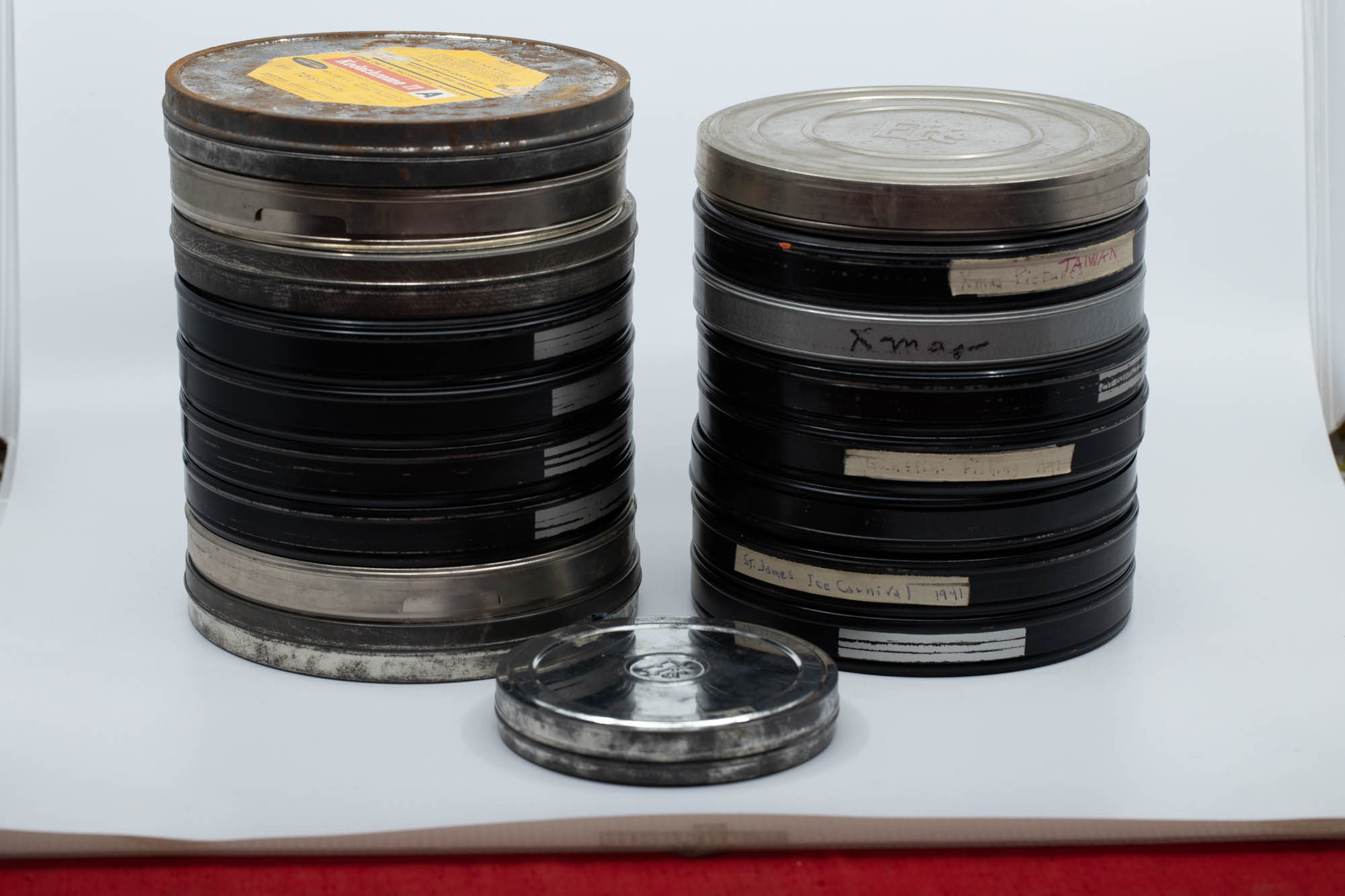
As I mentioned in an earlier blog entry, I inherited a collection of 16mm movies made by my two grandfathers, each an enthusiastic amateur and early adopter of photo technology. I have been struggling with their fate, as they consume a not-inconsiderable amount of space in my archives. Space that could be used to store other useless artifacts.
They have now been (mostly) digitized. And one can find them summarized at this page.
I have great difficulty getting rid of things. As someone who respects the historical path that brought us to our current time, place, and relations, it is hard to discard mementos, especially (for me) photographs that captured moments along that path. As a scientist, I am loathe to delete “data”, that might someday be valuable.
I have to acknowledge the slim likelihood of such artifacts becoming valuable. I hold no conceit that some biographer will ever be looking for scraps and clues identifying the influences on my own childhood. I like to think that my contributions to society have been positive, but probably not worth much more than an oblique reference in an obituary (“he was a curious man”). But maybe there were things in those movies that would be of interest to someone else. I didn’t know how to find that audience.
So the movies, spooled on metal reels of various sizes, lay dormant for years. When I wondered about their ultimate fate, I realized that eventually, they would have NO meaning to anyone, even if it were possible to view them. If there was any value to be extracted, it would have to be now, by me.
I described that initial effort in the previous post on this topic. Here is what has happened since.
Jennifer Huebscher at the Minnesota Historical Society reviewed my summary descriptions of the films based on the markings on their reels. She accepted ten of them, which I delivered to her this last summer. She initiated the process of scanning them and putting them online as part of the historical society’s media database. The results are remarkable in their resolution and accuracy– the very best of all the attempts to convert these old films.
After looking at the remainder, I decided to select a dozen or so that piqued my curiosity and have them converted to a modern digital format. Kodak offers a service to do this, but it is not exactly a rapid turnaround. I received notices of the progress that my film was making through their processing pipeline all summer long.
I finally received the notice that the scanning was complete and that I could access the digitized movie files in a directory on Google drive. I did.
The Kodak conversions were merely ok, not much better than the ones my dad had done about twenty years earlier, just with different artifacts. And the content was less interesting. Perhaps Dad had gone through this very same process, identifying the films that had the highest interest level (for him), and had converted them. Indeed, several of the files I received showed the exact same content as his.
Many of the films showed people in unknown places, doing activities that, at the time, were worth aiming a movie camera at, but are not of much interest today. Some of the films showed my parents in their childhood. These are interesting to me because I knew my parents. The next generation knew them, but not on an intimate daily basis. My grandchildren knew them not at all. Why would watching a movie of their great-grandparents taking their first steps be of any interest to them?
Nevertheless, I viewed them carefully, making notes of the people and places I could identify. I was aware that I am now uniquely qualified to do this; the family members who could properly describe the scenes in these films are now all gone. All that remains are the hazy memories of my childhood which have now become the most authoritative, but unreliable, reference for these old films.
Which furthers my opinion about their diminishing value. Eventually no one will have a memory connection to these images of unknown people in unknown places. If there is one, it will be because of a story that survived the generations. Sadly, with the passing of the subjects and witnesses to these scenes, those stories are unlikely to be written.
I will now place the immortalized digital movies on my photo site and index them from this summary, and with great reluctance, discard the physical sources, making room in my archives for other items; items that are also unlikely to retain their nostalgic value when I am gone.

